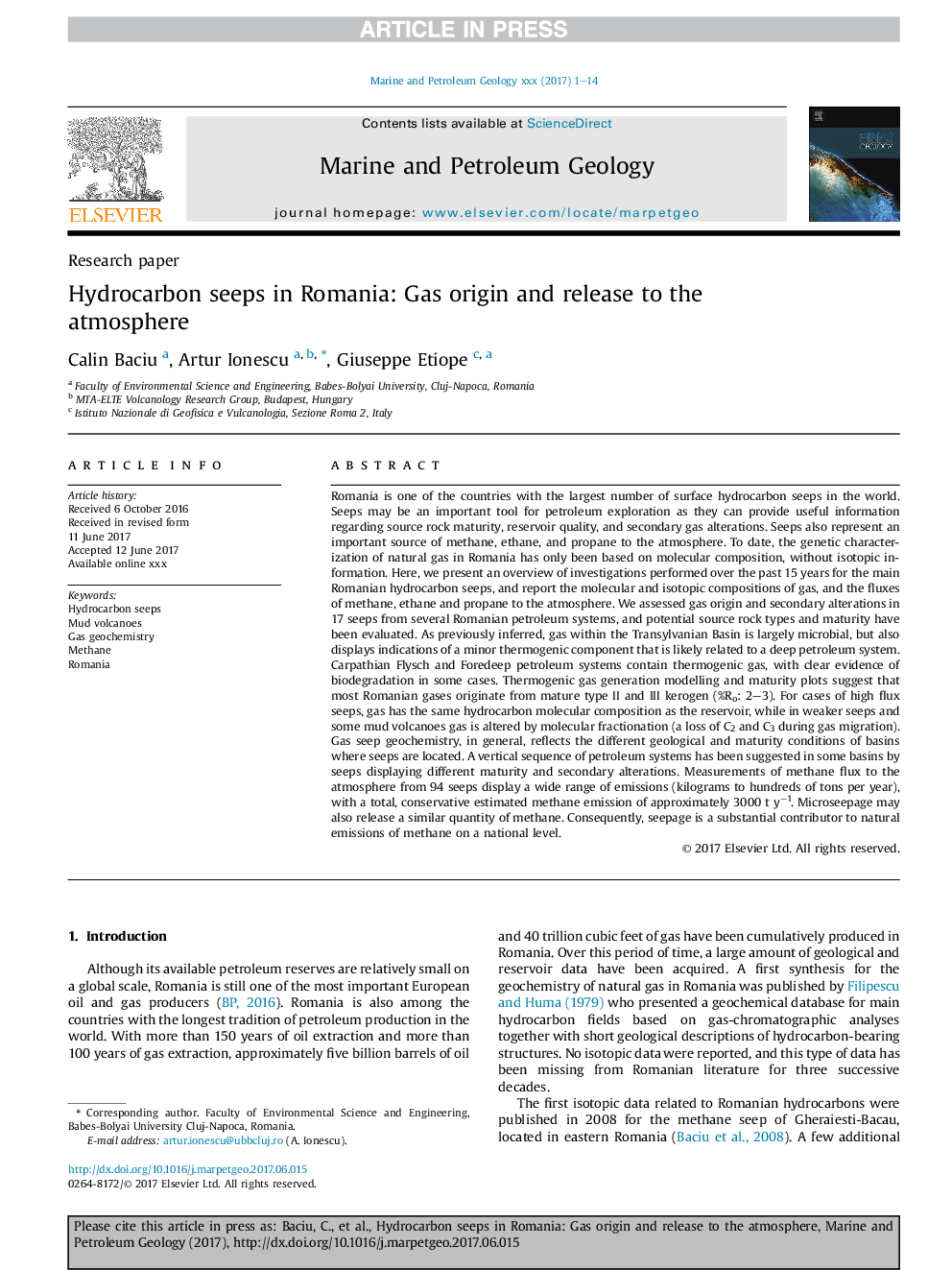| Article ID | Journal | Published Year | Pages | File Type |
|---|---|---|---|---|
| 8909305 | Marine and Petroleum Geology | 2018 | 14 Pages |
Abstract
Romania is one of the countries with the largest number of surface hydrocarbon seeps in the world. Seeps may be an important tool for petroleum exploration as they can provide useful information regarding source rock maturity, reservoir quality, and secondary gas alterations. Seeps also represent an important source of methane, ethane, and propane to the atmosphere. To date, the genetic characterization of natural gas in Romania has only been based on molecular composition, without isotopic information. Here, we present an overview of investigations performed over the past 15 years for the main Romanian hydrocarbon seeps, and report the molecular and isotopic compositions of gas, and the fluxes of methane, ethane and propane to the atmosphere. We assessed gas origin and secondary alterations in 17 seeps from several Romanian petroleum systems, and potential source rock types and maturity have been evaluated. As previously inferred, gas within the Transylvanian Basin is largely microbial, but also displays indications of a minor thermogenic component that is likely related to a deep petroleum system. Carpathian Flysch and Foredeep petroleum systems contain thermogenic gas, with clear evidence of biodegradation in some cases. Thermogenic gas generation modelling and maturity plots suggest that most Romanian gases originate from mature type II and III kerogen (%Ro: 2-3). For cases of high flux seeps, gas has the same hydrocarbon molecular composition as the reservoir, while in weaker seeps and some mud volcanoes gas is altered by molecular fractionation (a loss of C2 and C3 during gas migration). Gas seep geochemistry, in general, reflects the different geological and maturity conditions of basins where seeps are located. A vertical sequence of petroleum systems has been suggested in some basins by seeps displaying different maturity and secondary alterations. Measurements of methane flux to the atmosphere from 94 seeps display a wide range of emissions (kilograms to hundreds of tons per year), with a total, conservative estimated methane emission of approximately 3000 t yâ1. Microseepage may also release a similar quantity of methane. Consequently, seepage is a substantial contributor to natural emissions of methane on a national level.
Related Topics
Physical Sciences and Engineering
Earth and Planetary Sciences
Economic Geology
Authors
Calin Baciu, Artur Ionescu, Giuseppe Etiope,
